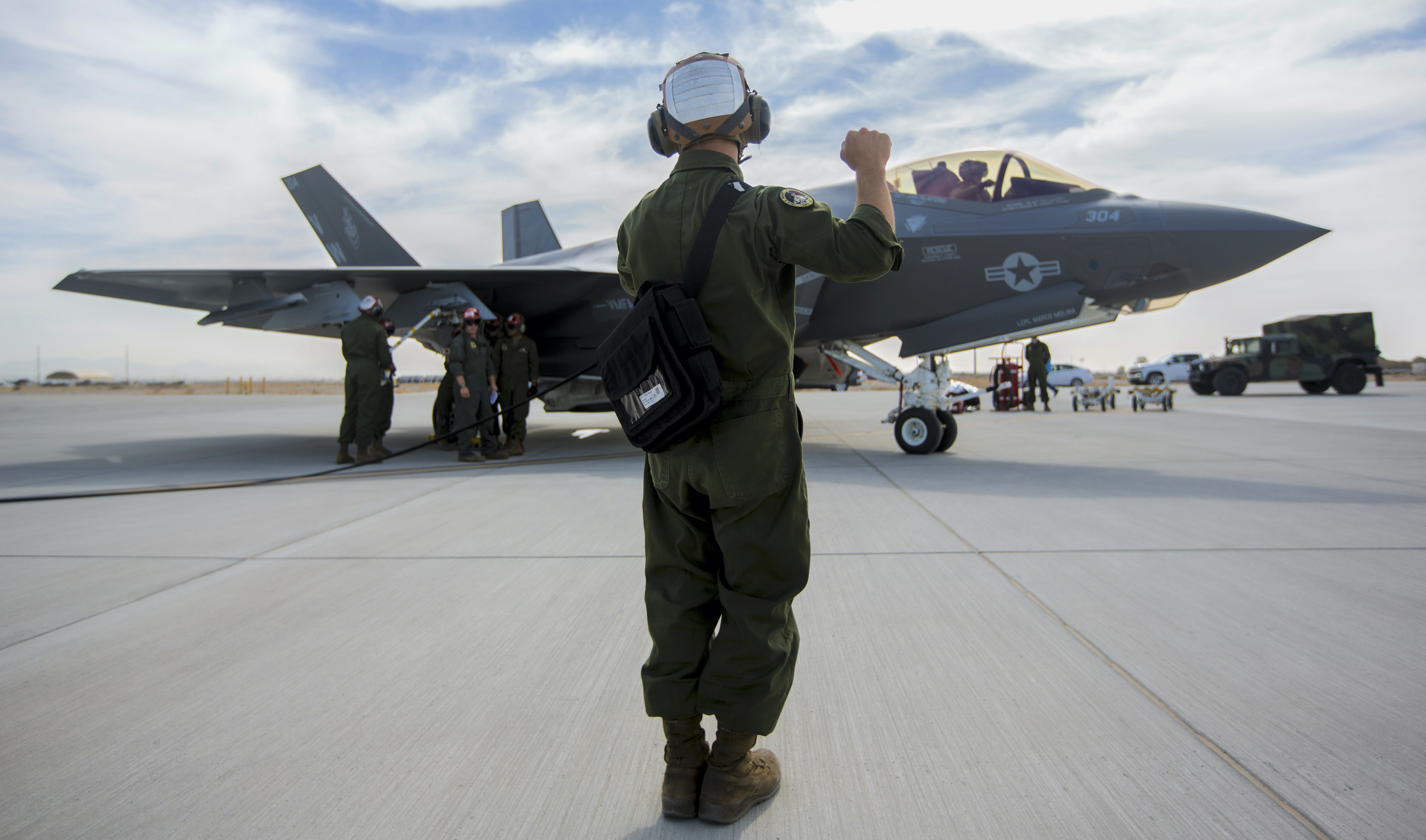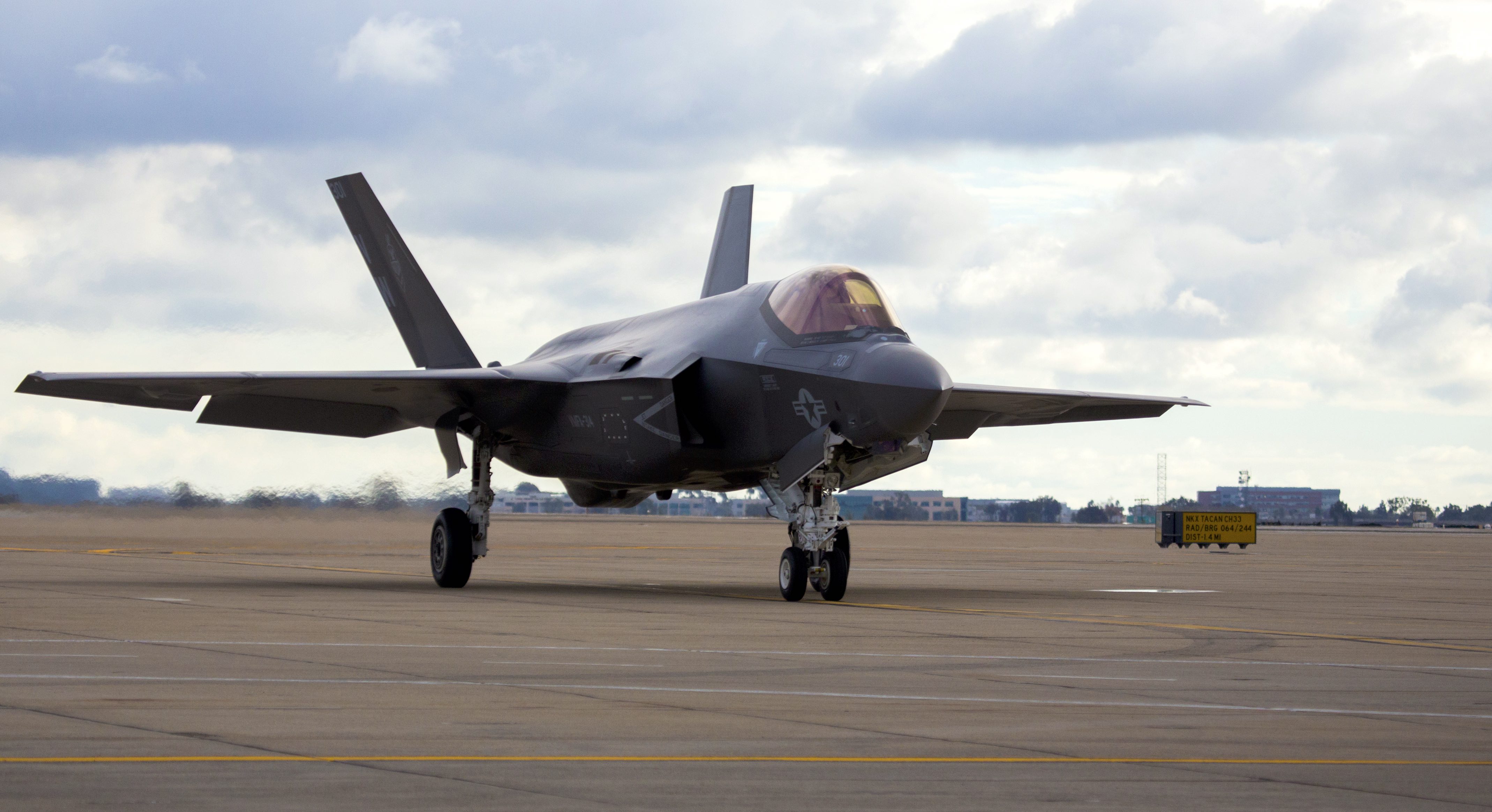
The Marine Corps’ first carrier-capable squadron of F-35C Lightning II jets reached initial operational capability on Tuesday, a key certification ahead of its first deployment on an aircraft carrier, 3rd Marine Aircraft Wing officials announced.
Marine Fighter Attack Squadron (VMFA) 314 is the first Marine Corps squadron to transition to the F-35C variant of the Joint Strike Fighter after retiring its legacy F/A-18A/C Hornet jets and getting its first F-35s earlier this year. The “Black Knights” squadron is based at Marine Corps Air Station Miramar in San Diego, Calif.
The certification is critical for the Marine Corps’ intent to continue to deploy strike fighter jets on aircraft carriers and integrate with carrier air wings.
“IOC is a significant milestone not only for 3rd MAW but also the Marine Corps. VMFA-314 is the first F-35C squadron in the Marine Corps,” Lt. Col. Duncan French, VMFA-314’s executive officer, said in the 3rd MAW announcement. “The F-35C’s unique capabilities, compared to the F-35B and legacy aircraft, provide the Marine Corps with a complementary increase in combat projection and the ability to operate from the U.S. Navy’s aircraft carriers.”
The Marine Corps is counting on the multi-mission, fifth-generation jet to modernize its small, carrier-based strike fighter fleet that can also operate from land bases. Larger internal fuel tanks and aerial refueling capability give the jet longer legs, enabling the jet to strike at-sea and land-based targets at longer range than the older Hornets.
“The F-35 is an expeditionary platform that extends the reach of our Marines and machines, and increases our ability to support joint and allied partners at a moment’s notice,” Maj. Gen. Christopher Mahoney, 3rd MAW’s commanding general, said in the statement. “By effectively employing the F-35, MAGTF [Marine Air-Ground Task Force] commanders have the potential to dominate our adversaries in a joint battlespace, in the air and out at sea.”

The squadron, which falls under Marine Aircraft Group 11, has spent the better part of a year transitioning pilots and maintainers to the new single-seat jets, which are loaded with more capable navigation, avionics, weapons systems and sensors than the Hornets.
“Our maintenance department was critical to the success of IOC. In addition to accepting and inspecting the multiple aircraft that arrived throughout the year, the Marines maintained a high level of aircraft readiness,” French said. “Those mission-capable aircraft allowed the pilots to train in the appropriate missions required of IOC, as well as contributed towards the readiness metrics of IOC.”
They spent part of that time at Naval Air Station Lemoore, Calif., training and working with the Navy’s “Rough Riders” of Fighter Squadron 125, the fleet replacement squadron for the F-35C. The squadron got its safe-for-flight operations certification in March, meaning they could train at home without the supervision of VFA-125. This past summer, VMFA-314 crews joined in a multi-aircraft strike package during exercise Summer Fury supporting Marine Corps training for expeditionary advanced base operations.
The Marine Corps had planned to buy 67 F-35Cs for four carrier-capable squadrons, according to the service’s 2019 Aviation Plan. Earlier this year, however, the service decided to consider reducing – from 16 to 10 – the number of jets per squadron, but Commandant Gen. David Berger hasn’t yet committed to reducing the buys due to ongoing force structure reviews and a planned aviation assessment.





